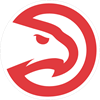One of the greatest movements in fantasy games – baseball and for other sports – is the advent of customization in the game. The RotoWire commissioner service offers the ability to do pretty much anything you want. The ottoneu game on FanGraphs is a dynasty league that combines salary cap management, planning for the present and planning for the future in a way that is unmatched.
Part of the appeal of those game types is the venture into the unknown. Discovering which profiles fit your scoring method best; which positions become scarcest the quickest. Finding the quirks in these unfamiliar rules can bring great joy – especially when it leads to a league championship.
That said, on the other side of the coin, the familiarity of the traditional scoring system can offer some much needed comfort in the world of the unknowns, the auction keepers and the dynasties and the awkward head-to-heads involving innings pitched and SB-CS and whatever other weird "fairness" stat there is.
Ostensibly, this allows an opportunity for better planning of the fantasy season. Maybe batting average isn't quite as predictable on a year-to-year basis as OBP or OPS, but it's a number with a bit more familiarity.
This year, I'm in nine different leagues, including one ottoneu points game, one ottoneu 5x5 game, one 5x5 head-to-head with IP instead of W, SB-CS instead of SB, TB instead of HR and OBP instead of AVG, one 14-team 5x5 roto league. My preparation in the former two went
One of the greatest movements in fantasy games – baseball and for other sports – is the advent of customization in the game. The RotoWire commissioner service offers the ability to do pretty much anything you want. The ottoneu game on FanGraphs is a dynasty league that combines salary cap management, planning for the present and planning for the future in a way that is unmatched.
Part of the appeal of those game types is the venture into the unknown. Discovering which profiles fit your scoring method best; which positions become scarcest the quickest. Finding the quirks in these unfamiliar rules can bring great joy – especially when it leads to a league championship.
That said, on the other side of the coin, the familiarity of the traditional scoring system can offer some much needed comfort in the world of the unknowns, the auction keepers and the dynasties and the awkward head-to-heads involving innings pitched and SB-CS and whatever other weird "fairness" stat there is.
Ostensibly, this allows an opportunity for better planning of the fantasy season. Maybe batting average isn't quite as predictable on a year-to-year basis as OBP or OPS, but it's a number with a bit more familiarity.
This year, I'm in nine different leagues, including one ottoneu points game, one ottoneu 5x5 game, one 5x5 head-to-head with IP instead of W, SB-CS instead of SB, TB instead of HR and OBP instead of AVG, one 14-team 5x5 roto league. My preparation in the former two went well, in the other two... not so much.
The other five are as vanilla as vanilla gets – the basic Yahoo rotisserie game, all default settings, 12 team leagues. These are the leagues you would expect to be able to plan for reasonably well – no surprises. But, just to be safe, let's test that theory. Observe, a graphical representation of the standings from my five leagues this season:
Although we see the spreads are a little wider in some leagues and tighter in others, the same general pattern emerges. A six-point score in one league is likely in the 4-8 range in any of the others. No 12-point total is worth fewer than nine points in any other league and no one-point total is worth any more than four in any other league, in any other statistic.
Looking deeper at the spreads, we can put 6-point (better than 50 percent of the league) 9-point (66 percent) and 12-point (87.5 percent) using standard deviations. The average score earns the 6-point mark, a score +0.4 standard deviations from the mean earns the 9-point mark; a score 1.1 standard deviations from the mean earns the 12-point mark (with six percent added on to counting stats to account for the week of scoring left).
Runs
Min: 643
Max: 957
Average: 845
SD: 63
9-point target: 871
12-point target: 915
Home runs
Min: 164
Max: 283
Average: 223
SD: 27
9-point target: 233
12-point target: 252
RBI
Min: 665
Max: 951
Average: 817
SD: 59
9-point target: 840
12-point target: 881
SB
Min: 49
Max: 200
Average: 131
SD: 27
9-point target: 142
12-point target: 161
AVG
Min: .252
Max: .292
Average: .271
SD: .009
9-point target: .275
12-point target: .281
W
Min: 54
Max: 111
Average: 87
SD: 10
9-point target: 91
12-point target: 98
SV
Min: 9
Max: 170
Average: 94
SD: 38
9-point target: 109
12-point target: 135
K
Min: 901
Max: 1524
Average: 1246
SD: 111
9-point target: 1290
12-point target: 1368
ERA
Min: 2.83
Max: 4.39
Average: 3.75
SD: 0.31
9-point target: 3.62
12-point target: 3.40
WHIP
Min: 1.13
Max: 1.37
Average: 1.25
SD: 0.12
9-point target: 1.22
12-point target: 1.18
So, that's a good deal of information to digest. These results should probably be considered preliminary until data is collected from more than just five leagues, but given the consistency in rules, rosters, and league provider I don't think there would be much of a sample size issue here.
Those of you fighting down the stretch for position probably already have a good idea of what you need to get in order to move up as far as possible by October 3. Then, planning begins for next season. These targets will be dependent on any changes in run environment – will the bats heat up again after consecutive years of the pitcher? But with projections for next year likely predicting a similar season, these targets should be usable for draft softwares like the one we offer here. And a prepared owner is always better off.





































